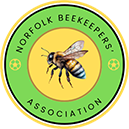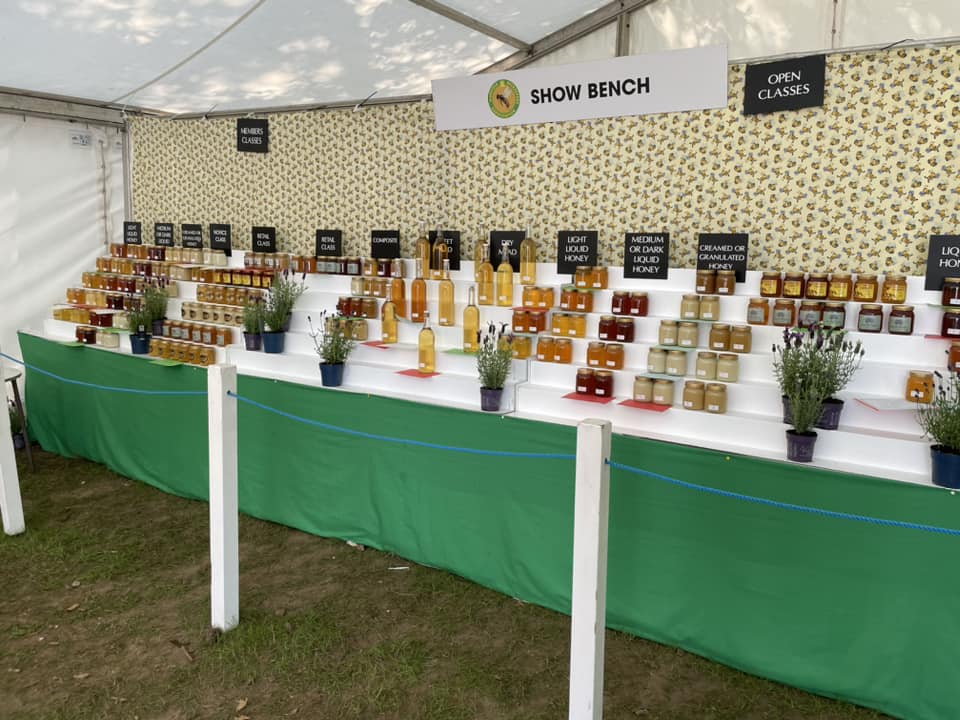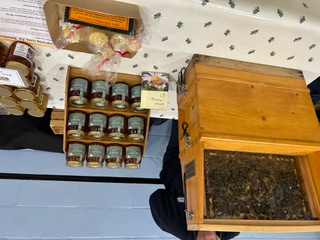Spring 2025
A Surprising Extraction Day
18th May


Words and Photography: Adrian Fletcher - 1st June 2025
It was a surprise start to the 2025 beekeeping season with a swarm before the weather was warm enough (at the weekend) to perform the first inspections. It seemed the oil seed rape came in to flower earlier than normal and before you know it, the rape flowers have all but gone and it’s time to extract.
Last year I left extraction until the first week in June, which was a fraction too late, resulting in a disappointing rate of crystallisation in the frames rendering the affected honey and comb all but useless, around a third of all supers. So I was determined this year was going to be different!
I decided I would pull off frames as they were capped which resulted in four very full supers that I took from the bees on 10th May and promptly extracted using a small manual extractor. An early 70 lbs of honey!
The following weekend the OSR flowers now all but vanished, there was no choice and the clearer boards went on the hives after the inspections on the Saturday. Pulling off and manually clearing any supers on hives that did not have resident queens since they would not clear using the boards. FYI, I use an ordinary crown board with rhombus escapes (one-way doors that allow bees to leave the honey supers but not re-enter) temporarily screwed to them.
The next morning it’s an early start and a visit to each of the apiaries to collect the now hopefully cleared supers. Most were fine but one had a brood box on top of a snelgrove board (a dividing board used for swarm control with multiple opening doors) over the supers, I forgot to close the entrance to the bottom colony where the supers were located – doh! By the time I got home it was already 11am and it took another half an hour to empty the supers from the truck to the ‘honey room’ (aka the utility room).
At this point I knew it was going to be a very long day.
My wife (or ‘Beekeeper’s Widow’ as she likes to be known), had kindly prepared the honey room by giving it a deep clean, so with no time to spare it was time to get extracting.
Uncapping the Truth

I started beekeeping 10 years ago and always used a carving knife to uncap the frames. Last year I gave the heat gun a try and have not looked back. This method is so quick, although you need to be careful as the wax does pop and can cause splatter on local surfaces. If the cappings are pressed flat against the honey then the heat gun won’t work, so then I scrape the cappings with an uncapping fork, they don’t need to be removed, just enough to release the honey underneath.
I brought back several supers home the day before the extraction process, and put them straight in to the honey room with an electric heater to keep them warm for the next day.
Humidity and Temperature Gauge: - Yes, it says 32 DegC ! The honey room should be nice and warm when extracting, I use a fan to help it feel more tolerable and have a glass of water to hand which is constantly refilled for hydration.

Extraction Workflow
For the main event I use an 8 frame swing cage tangential powered extractor, which I find perfect for just one person that is working to perform all the tasks of uncapping, loading/unloading, straining and bucketing the honey. The swing cage saves time and effort of turning each frame one by one. The only thing I wish the Lyson extractor had was a brake.
If you have several boxes of frames to process as I usually do, then it's key to think about workflow, somewhere to stack the full supers (preferably in the warm honey room), somewhere to unload the frames from each super, one at a time as you uncap them, somewhere to put several uncapped frames before they are loaded in to the extractor, another pile of empty supers awaiting the frames being unloaded from the extractor, and then somewhere to stack the empty supers temporarily whilst continuing to extract and before putting them back in to storage or back on the hives.
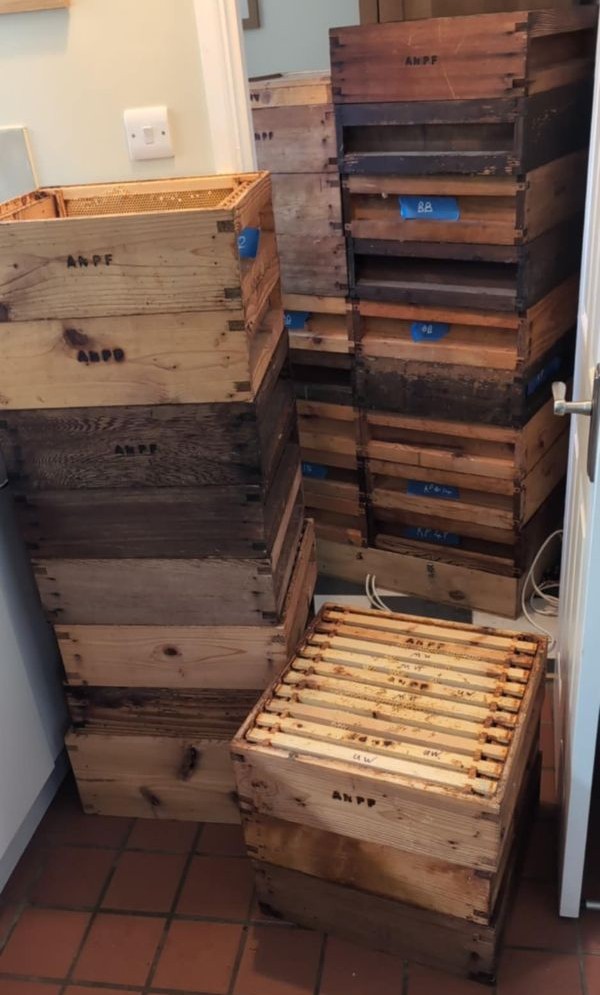

This harvest was my first time using the Logar uncapping stand and frame holder, and it worked well for me, although I gave up using the frame stand as I use mostly Manley super frames which do not fit. But it was great to have somewhere that could be used for items dripping in honey.
Filtering and Straining
The process preferably used for honey is actually ‘straining’, which usually involves a couple of grades of coarse and finer sieves, but this is not to be mistaken for a filter which uses a very fine ‘filter’ ultimately will remove the valuable pollen from the honey.
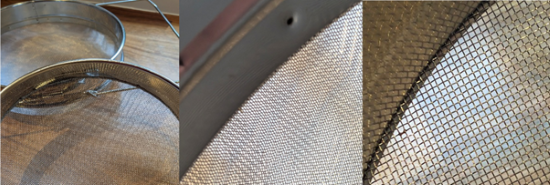
I use several different types of strainers as this is part of the extraction process that can get very messy and slow progress significantly. This is particularly a problem when dealing with honeys that granulate quickly, like oil seed rape, where the gauze quickly becomes blocked. Sometimes it is practical to use only a coarse grade strainer, I use a basic sieve that is the size of an ordinary colander from Amazon.
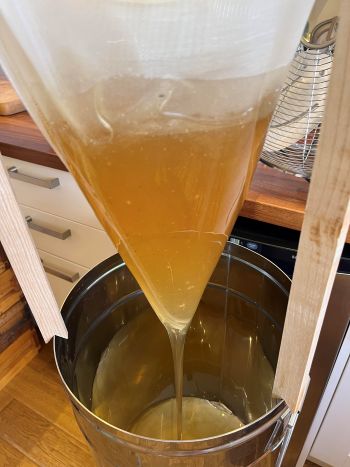
Above is a picture of a high-capacity conical type strainer that I also use, which can be used with either or both coarse and fine strainers.
As I load each bucket I take a sample for water content, analysing with a basic refractometer, always ensuring it’s below 20% and hoping for 18% or less. I make a note on the bucket of the extraction date and its water content, I then ensure I use the honey with the higher water content first. The lowest batch was 16% and the highest 19.5%. It is normal for spring honey to be high in water content so it’s worth performing this test, particularly if you are planning to store or sell your honey.
At the End of a Long Weekend of Work…
I finally completed extraction at around 9pm, just in time for an initial hose down and clean up. I was astounded by the harvest which was my largest yet at around 650 lbs, more than both spring and summer 2024 together.

And the final result… Well, actually I usually put my harvest straight into 30 lb buckets ready for jarring at a later date the process of which is a topic for another day, particularly if you are looking for high quality results and planning to enter our Honey Exhibition on 25th / 26th June 2025!
